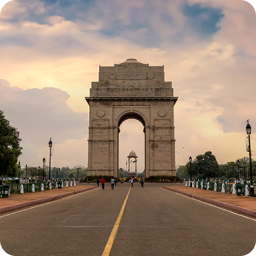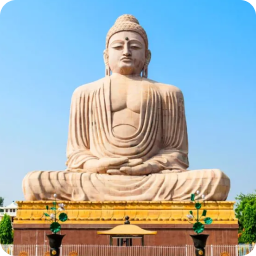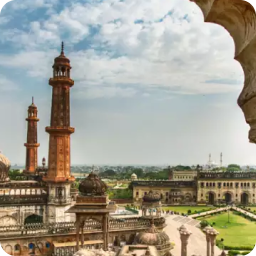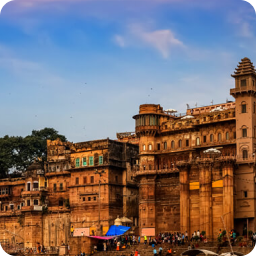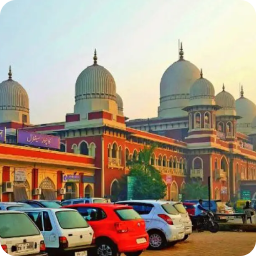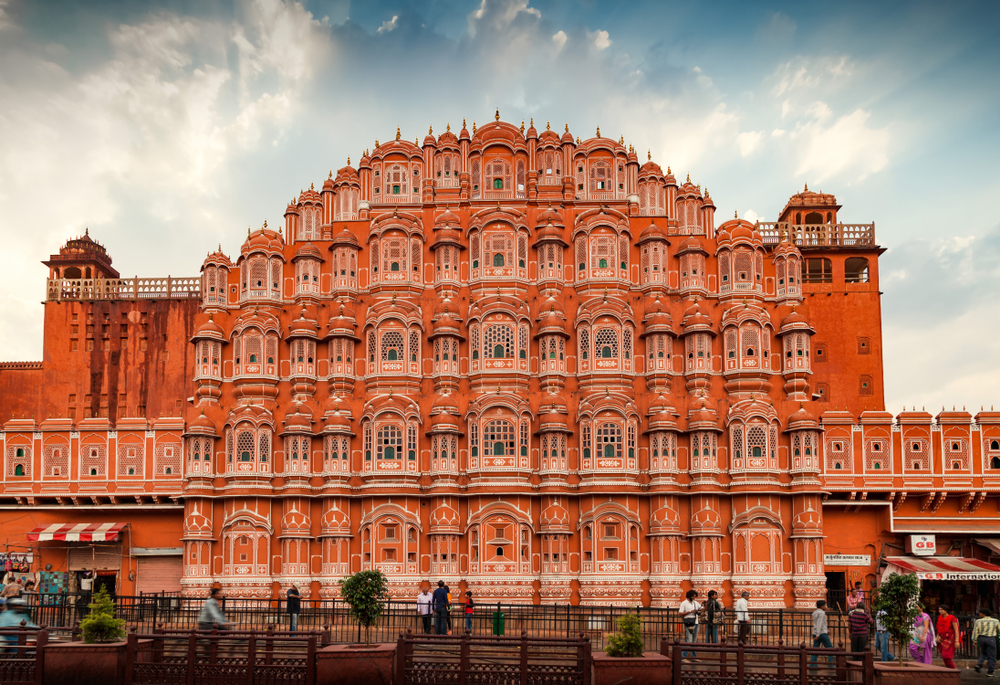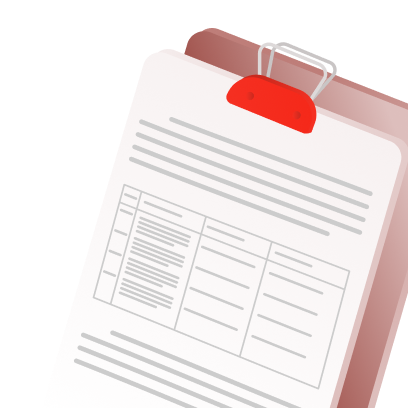Emergency Provisions in India: Article 356 & 352, Constitutional Insights & Governance Implications |
EMERGENCY PROVISIONS: Crisis Management in Indian Polity
Preparing for competitive exams like the IAS requires understanding Emergency provisions, a vital part of the Indian Polity syllabus (Prelims and GS II). These provisions, including the National Emergency, President’s Rule, and Financial Emergency, address exceptional situations like war or rebellion. They impact the relationship between the Center and States and citizens’ Fundamental Rights. Aspiring IAS candidates must thoroughly grasp these provisions to excel in their studies.
“Democracy is not what happens at elections, but what happens in – between”.
Constitutional Dynamics in Crisis: Emergency Provisions in Indian Governance
- Emergency provisions spanning from Article 352 to 360 in Part XVIII.
- During the emergency, the Central Government gets extraordinary powers and and all states come under the total control of the Centre.
| “Suspension of Fundamental Rights during proclamation of emergency” provision borrowed from Weimer constitution (Germany) |
- During an Emergency, the federal structure becomes a unitary one without requiring a formal amendment. This is a unique feature of the Indian Constitution.
- Emergency provisions are borrowed from the Government of India Act 1935.
Rationale and Impact of India’s Emergency Provisions
- Emergency provisions serve as a protective ring around the fragile republic system.
| “The Constitution of India can be both unitary as well as federal according to the requirements of time and circumstances. In normal times, it is framed to work as a federal system. But in times of Emergency, it is so designed to make it work as though it was a unitary system….” – Dr. B.R. Ambedkar observed in the Constituent Assembly. |
- To safeguard the sovereignty, unity, integrity and security of the country, the democratic political system, and the Constitution.
- Historical accounts have indicated that any sign of weakness of the Central government has led to Balkanization and disintegration of the Union.
- To deal with unforeseen situations arising in case of any exigencies, where the national interest and unity is threatened.
Emergency Provisions: Safeguards, Types and Constitutional Basis of National Emergency Declarations in India |
1. National Emergency under Article 352: Powers, Grounds and Implications in India
- According to Article 352, A Proclamation of Emergency can be issued if the President believes that India’s security or any part of its territory is under threat from war, external aggression, or armed rebellion, even before these events actually happen, if the President is convinced that they are imminent.
National Emergency Declarations: External and Internal threats examined through Constitutional dimensions-
- External Emergency: Declared on the ground of ‘war’ or ‘external aggression’.
| Special Majority – Majority of the total membership of that house and a majority of not less than two-thirds of the members of that house present and voting. |
- Internal Emergency: Declared on the ground of ‘armed rebellion’.
- President can declare a national emergency when the security of India or a part of it is threatened by war or external aggression or armed rebellion even before the actual occurrence.
- A national emergency proclamation may apply to either the whole country or specific parts of it, as enabled by the 42nd Amendment Act of 1976.
- 44th Amendment Act of 1978:
- It substituted the words “armed rebellion” for “internal disturbance” (This was done with an intent to eliminate the vagueness associated with the word internal disturbance and controversies surrounding it during the declaration in the year 1976)
- The President can declare a national emergency only upon receiving a written recommendation from the Cabinet, with their concurrence..
Parliament’s Authority and Emergency Provisions in Shaping National Emergency Declarations:-
- Special Majority: Every resolution approving the proclamation of emergency or its continuance must be passed by either House of Parliament by a special majority (By a simple majority of Parliament before 44th Amendment Act of 1978)
- Proclamation of Emergency must be approved by both the Houses of Parliament within one month (Two months in case of Article 356 and 360) from the date of its issue. (reduced from 2 months to 1 month by the 44th Amendment Act of 1978).
- If a National Emergency proclamation is issued when the Lok Sabha is dissolved or if its dissolution occurs within one month without approving the proclamation, the proclamation remains effective until 30 days after the first sitting of the newly constituted Lok Sabha, provided the Rajya Sabha has meanwhile approved it.
- If approved by both the Houses of Parliament, the emergency continues for six months, and can be extended to an indefinite period with Parliamentary approval for every six months (added by the 44th Amendment Act of 1978)
- Before that, the emergency, once approved by the Parliament, could remain in operation as long as the Executive (cabinet) desired (This was changed with due passage of the 44th Amendment act).
44th Amendment and Mechanisms for Curtailing Emergency Powers in India
- The President can revoke an Emergency at any time through a subsequent proclamation, which does not need parliamentary approval.
- President must revoke a proclamation if the Lok Sabha passes a resolution disapproving its continuation (Added by the 44th Amendment Act of 1978).
- Where one-tenth of the total number of members of the Lok Sabha give a written notice to the Speaker (or to the president if the House is not in session), a special sitting of the House should be held within 14 days for the purpose of considering a resolution disapproving the continuation of the proclamation (44th CAA 1978).
- Disapproval of proclamation is to be adopted by a simple majority only and required to be passed by the Lok Sabha only.
Effects of National Emergency: Extension of Lok Sabha and State Assembly Tenures
- Lok Sabha: The life of the Lok Sabha may be extended beyond its normal term (five years) by a law of Parliament for one year at a time for any length of time. This extension cannot continue beyond a period of six months after the emergency has ceased to operate. e.g. Fifth Lok Sabha (1971–1977).
- State Assembly: Parliament may extend the normal tenure of a state legislative assembly (five years) by one year each time (for any length of time) during a national emergency. This extension cannot continue beyond the maximum period of six months after the Emergency has ceased to operate.
Impact of National Emergency Provisions on the Suspension and Restoration of Fundamental Rights in India
| Suspension of FR under Article 358 | Suspension of FR under Art. 359 |
| Deals with the suspension of the FR guaranteed by Art. 19 | Deals with the suspension of other FR (except those guaranteed by Articles 20 and 21) |
| Six FR under Art.19 are automatically suspended.
Their suspension does not require a separate order. |
Article 359 empowers the President to suspend the right to approach any court for the enforcement of Fundamental Rights across the entire country or in specific regions, as specified in the Presidential Order, during a National Emergency.
FR as such are not suspended, but only their enforcement. It should be laid before each House of Parliament for approval. |
| The state can make any law or can take any executive action abridging or taking away the six FR guaranteed by Art.19 (cannot be challenged on the ground that they are inconsistent with six FR guaranteed by Art.19) | While a Presidential Order is in force, the State can make any law or can take any executive action abridging or taking away the specified FR.
No legal recourse is available for actions taken while the order is in effect, even after the order ceases to operate. |
| When the National Emergency ends, Article 19 automatically resumes and becomes enforceable. |
When the Order ceases to operate, any law so made, to the extent of inconsistency with the specified FR, ceases to have effect. |
| Six Fundamental Rights under Article 19 can only be suspended during a National Emergency declared due to war or external aggression (44th Constitutional Amendment Act, 1978). | The President cannot suspend the right to move the Court for the enforcement of FR under Art. 20 to 21 (remain enforceable even during emergency). (44th CAA 1978) |
| No remedy lies for anything done during the Emergency even after the Emergency expires (only those laws which are related with the Emergency, not other laws) (44th CAA 1978) | Only those laws which are related with the emergency are protected from being challenged and not other laws and the executive action taken only under such a law, is protected. (44th CAA 1978) |
Impact of National Emergency Provisions on Centre-State Relations in India
| Executive | Legislative | Financial |
| The Centre can instruct any state on how its executive power should be exercised. | During a national emergency, Parliament gains the authority to legislate on any matter listed in the State List. | President can modify the constitutional distribution of revenues between the Centre and the states. |
| Centre becomes entitled to give executive directions to a state on ‘any’ matter | Legislative power of a state legislature is not suspended, it becomes subject to the overriding power of the Parliament. | The President can either reduce or cancel the transfer of finances from Centre to the states. |
| State governments are brought under the complete control of the Centre, though they are not suspended. | The Constitution becomes unitary rather than federal.
The President can issue ordinances on subjects that fall within the jurisdiction of the states if Parliament is not in session. |
Such modification is continuing till the end of the financial year in which the Emergency ceases to operate. |
| The laws made by Parliament on the state subjects during a National Emergency become inoperative six months after the emergency has ceased to operate. | Every such order issued by the President must be presented to both Houses of Parliament.
|
Constitutional Comparisons: Differences Between Article 358 and Article 359 in India
| Articles 358 | Articles 359 |
| DIFFERENCES | |
| Art.358 is confined to FR under Art.19 only | Art.359 extends to all those FR whose enforcement is suspended by the Presidential Order. |
| Article 358 automatically suspends the FR under Art. 19 as soon as the emergency is declared. | Art.359 does not automatically suspend any FR. It only empowers the president to suspend the enforcement of the specified FR. |
| Art.358 operates only in case of External Emergency (on the grounds of war or external aggression) and not in the case of Internal Emergency (ground of armed rebellion). | Art. 359 operates in case of both External Emergency as well as Internal Emergency.
|
| Article 358 suspends FR under Art.19 for the entire duration of Emergency | Art. 359 suspends the enforcement of FR for a period specified by the president. |
| Article 358 extends to the entire country | Art. 359 may extend to the entire country or a part of it. |
| Article 358 suspends Article 19 completely | Art. 359 does not empower the suspension of the enforcement of Art. 20 and 21. |
| Article 358 enables the State to make any law or take any executive action inconsistent with FR under Art.19 | Art. 359 enables the State to make any law or take any executive action inconsistent with those FR whose enforcement is suspended by the Presidential Order. |
| SIMILARITIES |
| Both provide immunity from challenge to only those laws which are related with the Emergency no other laws.
The executive action taken only under such a law is protected by both. |
National Emergency Declarations: Historical Events, Constitutional Dynamics and the Role of Emergency Provisions in India
- This form of Emergency has been declared on three occasions – in 1962, 1971, and 1975.
| Janta government (In 1977) appointed the Shah Commission to investigate the circumstances that warranted the declaration of an Emergency in 1975. The commission did not justify the declaration of the Emergency. |
- First Proclamation: In October 1962 on account of Chinese aggression in the NEFA and was in force till January 1968. Therefore, a new proclamation was not required during the war against Pakistan in 1965 under the grounds of ‘external aggression’.
- Second Proclamation: In December 1971 in the wake of attack by Pakistan. This was declared on the grounds of ‘external aggression’.
- Third Proclamation: In June 1975. Both the second and third proclamations were revoked in March 1977. This was declared on the grounds of ‘internal disturbance’.
Emergency Provisions Safeguards Post-44th Amendment Act 1978 for Democratic Resilience
- “Internal disturbance” replaced by “armed rebellion”.
- Written advice by cabinet instead of by only the PM.
- Special majority for ratification of emergency.
- Lok-Sabha can initiate action for premature termination.
- Repeated approval after every six months, unlike one year earlier.
- In the case of Minerva Mills vs Union of India it has been held that there is no bar to judicial review of the validity of the proclamation of emergency issued by the president under Article 352(1).
- However, the court’s role is limited to checking whether the Constitution’s restrictions have been followed or not.
- It can check if the satisfaction of the president is valid or not.
- If the satisfaction is based on mala fide, absurdity, or irrelevant grounds, it is not considered valid satisfaction.
- Control of Lok Sabha in revocation of emergency (Earlier, proclamation could be revoked by the president on his own and the Lok Sabha had no control in this regard).
Complexities of Emergency Provisions, Freedom, and Authoritarian Legislation in Contemporary India
- The 44th amendment act has effectively insulated us against the imposition of Art.352 on baseless, irrational and non-objective grounds.
- Freedom of speech and expression has become a major victim. Suppression of these democratic rights ensured even without invoking emergency.
- Tradition of oppression taught us that state emergency is rule rather than exception.
- Yet the government is becoming more authoritarian and armed themselves with draconian and archaic colonial legislation –E.g. Sedition, AFSPA, PoTA, TADA.
2. PRESIDENT’S RULE (ART.356) in Indian States with Emergency Provisions
- When the constitutional machinery breaks down in a state, the president’s rule is imposed by the centre.
- This can be proclaimed if the president is satisfied that the governance of a state can’t be carried in accordance with the constitution.
- In this case, the President can act with or without the governor’s report. Also when a state doesn’t follow any directive from the centre, the president’s rule can be imposed.
- First, the President’s Rule was imposed in Punjab in 1951.
- Since 1950, the President’s Rule has been imposed on more than 125 occasions, that is, on an average twice a year.
- Maximum times imposed in Manipur (10 times) followed by UP (9 times)
| “Hoped for the drastic power conferred by Article 356 would remain a ‘dead letter’ and would be used only as a measure of last resort” – observed Dr. B.R. Ambedkar. |
The Interplay of Articles 355, 356 and Emergency Provisions in President’s Rule with the Constitutional Mandate and Crisis Management
- Article 355: – Imposes a duty on the Centre to ensure that the government of every state is carried on in accordance with the provisions of the Constitution.
- Article 356: Provisions in case of failure of constitutional machinery in states. President’s Rule can be proclaimed under Article 356 on two grounds –
- Article 356: Empowers the President to issue a proclamation if he believes that a situation has arisen where the state government cannot operate according to the provisions of the Constitution.
- The President can act based on a report from the state’s governor or through other means.
- Article 365: It says that whenever a state fails to comply with or to give effect to any direction from the Centre, it will be lawful for the president to hold that a situation has arisen in which the government of the state cannot be carried on in accordance with the provisions of the Constitution.
- Article 356: Empowers the President to issue a proclamation if he believes that a situation has arisen where the state government cannot operate according to the provisions of the Constitution.
Operation of President’s Rule with Emergency Provisions
- A proclamation imposing President’s Rule must be approved by both Houses of Parliament within two months of its issuance.
- If the proclamation is issued when the Lok Sabha is dissolved, or if the Lok Sabha is dissolved within the two-month period without approving the proclamation, it will remain in effect until 30 days after the first sitting of the newly reconstituted Lok Sabha, provided the Rajya Sabha has approved it in the meantime.
- If approved by both Houses of Parliament, the President’s Rule continues for six months. With Parliament’s approval every six months, it can be extended for up to three years.
- If the dissolution of the Lok Sabha takes place during the period of six months without approving the further continuation of the President’s Rule, then the proclamation survives until 30 days from the first sitting of the Lok Sabha after its reconstitution, provided the Rajya Sabha has in the meantime approved its continuance.
- Every resolution approving the proclamation or its continuation can be passed by either House of Parliament only by a simple majority.
- Beyond one year, the President’s Rule can be extended by six months at a time only when the following two conditions are fulfilled (44th CAA 1978) :-
- A proclamation of National Emergency should be in operation in the whole of India, or in the whole or any part of the state.
- The Election Commission must certify that it is not possible to hold general elections for the legislative assembly of the concerned state due to difficulties.
Revocation Process of President’s Rule under Emergency Provisions
- A proclamation of President’s Rule may be revoked by the President at any time by a subsequent proclamation.
- Such a proclamation does not require the parliamentary approval.
Consequences of President’s Rule and Emergency Provisions on State Functionality
| It is important to note that the constitutional position, status, powers, and functions of the state’s high court remain unchanged even during President’s Rule. |
- The President removes the state council of ministers led by the chief minister.
- The state governor, acting on behalf of the President, oversees the state administration with the assistance of the chief secretary or advisors appointed by the President.
- The President can either suspend or dissolve the state legislative assembly.
- The Parliament approves state legislative bills and the state budget.
- The President can assume the functions of the state government and the powers vested in the governor or any other executive authority in the state.
- He can announce that the powers of the state legislature will be exercised by the Parliament.
- He can take all necessary actions, including suspending constitutional provisions related to any body or authority in the state.
WHEN THE STATE LEGISLATURE IS THUS SUSPENDED OR DISSOLVED:
- Parliament has the authority to delegate law-making powers for the state to the President or to any other specified authority.
| A law made by the Parliament or president or any other specified authority continues to be operative even after the President’s Rule, not coterminous with the duration of the proclamation.
The state legislature can repeal, amend, or re-enact such a law. |
- The President can authorize expenditure from the state consolidated fund when the Lok Sabha is not in session, pending approval by Parliament.
- The President can issue ordinances for the governance of the state when Parliament is not in session.
Sarkaria Commission Recommendations on the Prudent Use of Article 356 in State Governance
- Provision should be used sparingly and as a measure of last resort.
- Warning should be issued to erring govt with opportunity to rectify.
- Governors should explore all possibilities of forming an alternative course.
- The judicial review can assess the presidential proclamation imposing President’s Rule.
- The President’s satisfaction must be based on relevant material.
- The burden rests on the Centre to demonstrate the existence of relevant material justifying the imposition of President’s Rule.
- The court cannot evaluate the accuracy or sufficiency of the material but can examine its relevance to the action.
- If the court deems the presidential proclamation unconstitutional and invalid, it can reinstate the dismissed state government and revive the state legislative assembly if it was suspended or dissolved.
- The state legislative assembly should only be dissolved after Parliament has approved the presidential proclamation.
- Secularism is considered one of the ‘basic features’ of the Constitution, therefore, a state government pursuing anti-secular policies may face action under Article 356.
- The question of whether the state government has lost the confidence of the legislative assembly should be decided on the floor of the House.
- When a new political party assumes power at the Centre, it does not have the authority to dismiss ministries formed by other parties in the states.
- The power under Article 356 is an exceptional power and should be used only occasionally to meet the requirements of special situations.
Article 356: Distinguishing Between Proper and Improper Use – Learnings from Sarkaria Commission and Bommai Case
- Drawing from the Sarkaria Commission on Centre-state Relations (1988), the Supreme Court in the Bommai Case (1994) outlined scenarios where the use of power under Article 356 could be deemed appropriate or inappropriate.
| Proper Imposition of President’s Rule | Improper Imposition of President’s Rule |
| Where no party secures a majority in the assembly after general elections, resulting in a “Hung Assembly”. | Where the power is used to sort out intraparty problems of the ruling party, or for a purpose extraneous or irrelevant to the one for which it has been conferred by the Constitution. |
| Where the party with a majority in the assembly refuses to form a ministry, and the governor cannot establish a coalition ministry that commands a majority in the assembly. |
Where the ruling party, which previously had majority support in the assembly, experiences a massive defeat in the general elections to the Lok Sabha, as observed in 1977 and 1980. |
| Where a ministry resigns after its defeat in the assembly and no other party is willing or able to form a ministry commanding a majority in the assembly. | Where the state government is not given prior warning to rectify itself except in case of extreme urgency leading to disastrous consequences. |
| Where the constitutional direction of the Central government is disregarded by the state government. | Where a ministry resigns or is dismissed on losing majority support in the assembly and the governor recommends imposition of President’s Rule without probing the possibility of forming an alternative ministry. |
| Physical breakdown where the government willfully refuses to discharge its constitutional obligations endangering the security of the state. | Where the governor makes his own assessment of the support of a ministry in the assembly and recommends imposition of President’s Rule without allowing the ministry to prove its majority on the floor of the Assembly. |
| Internal subversion where, for example, a government is deliberately acting against the Constitution and the law or is fomenting a violent revolt. | Internal disturbances not amounting to internal subversion or physical breakdown. |
| Maladministration in the state or allegations of corruption against the ministry or stringent financial exigencies of the state. |
Strengthening Democratic Governance: NCRWC Recommendations for Transparent State Administration and Legislative Proceedings
- Warning must be given to state governments, reasonable and fair opportunity to correct its administration.
- Proclamation must clearly specify the reasons and grounds for imposition.
- Floor test must be mandatory to prove majority.
- Grounds for dissolving assembly or keeping it in suspension must be specifically mentioned.
Emergency Provisions in India: A Comparative Study of National Emergency (Article 352) and President’s Rule (Article 356)
| National Emergency (Article 352) | President’s Rule (Article 356) |
| Declaration under Article 352 can only occur during threats to India’s security from war, external aggression, or armed rebellion. |
It can be proclaimed when the government of a state cannot be carried on in accordance with the provisions of the Constitution. |
| While the state executive and legislature retain their functions and powers under the Constitution, the Centre gains concurrent administrative and legislative authority over the state. |
The state executive may be dismissed, and the state legislature suspended or dissolved, with the President administering the state through the Governor, and Parliament legislating for the state. |
| Fundamental rights are affected during this period. | It does not directly impact the fundamental rights of citizens. |
| Parliament alone can legislate on subjects listed in the State List under Article 352, without delegating this authority to any other body. | Parliament can delegate legislative authority for the state to the President or another specified authority, resulting in laws known as President’s Acts. |
| Article 352 modifies the relationship between the Centre and all states. | Under Article 356, the relationship of only the state under emergency with the Centre undergoes a modification. |
| Parliament must pass a resolution approving the proclamation or its continuation with a special majority. |
Parliament can approve the proclamation or its continuation with a simple majority. |
| Lok Sabha can pass a resolution for its revocation. | There is no other provision; only the President has the authority to revoke it independently. |
3. Financial Emergency (Art. 360) Mechanism: Judicial Review, Parliamentary Approval and Duration of Operation
- Article 360 is somewhat similar to the National Recovery Act of the United States, enacted in 1933.
Safeguarding Fiscal Stability with Judicial Monitoring
- Article 360 allows the President to declare a Financial Emergency if he believes that a situation has arisen threatening the financial stability or credit of India or any part of its territory.
- the 44th Amendment Act of 1978 made the satisfaction of the president subjected to judicial review. (Judicial review is part of basic structure of constitution)
Parliamentary approval and duration of operation
- A proclamation declaring financial emergency must be approved by both the Houses of Parliament within two months (One month in case of Article 352) from the date of its issue.
- Proclamation will survive until 30 days from the first sitting of the Lok Sabha after its reconstitution, If the proclamation is issued when the Lok Sabha is dissolved or if the Lok Sabha is dissolved within two months without approving the proclamation, and the Rajya Sabha has meanwhile approved it.
- The President may revoke a proclamation of Financial Emergency at any time through another proclamation, which does not need approval from Parliament.
- A resolution approving the proclamation of financial emergency can be passed by either House of Parliament only by a simple majority (a majority of the members of that house present and voting)
Revocation of Financial Emergency: Power of the President and Parliamentary Supervision
- A proclamation of Financial Emergency may be revoked by the president at any time by a subsequent proclamation.
- Such a proclamation does not require parliamentary approval.
Financial Emergency in India: Implications on Executive Authority and Fiscal Policies
- In India, no Financial Emergency has been declared so far, though there was a financial crisis in 1991.
- Executive authority of the Centre extends to the giving of directions to any state to observe such canons of financial propriety as may be specified in the directions and such other directions to any state as the President may deem necessary and adequate for the purpose.
- Any such direction may include a provision requiring –
- the reduction of salaries and allowances of all or any class of persons serving in the state;
- the reservation of all money bills (Art. 110) or other financial bills for the consideration of the President after they are passed by the legislature of the state.
- The President may issue directions for the reduction of salaries and allowances of –
- All or any class of persons serving the Union
- The judges of the Supreme Court and the High Court.
- During a financial emergency, the Centre assumes complete control over the states regarding financial matters.
Critiquing India’s Emergency Provisions
Some members of the Constituent Assembly gave following reasoning against the incorporation of emergency provisions in the Constitution –
- Destruction of the federal character of the Constitution and the Union will become all powerful.
- Encroachment in the states domain – The powers of the units of federation will entirely be concentrated in the hands of the Union executive.
- Dictatorship of the President and cabinet.
- The financial autonomy of the state will be null and void.
- Negation of the Fundamental rights and resultantly, the democratic foundations of the Constitution will be destroyed.
| Article | Approval | Majority | Revocation | Period |
|
1. Article 352 |
Within one month |
Special | By President (Lok Sabha only). No Parliamentary approval required. | Approved Proclamation Ends After Six Months Unless Revoked |
|
2. Article 356 |
Within two months |
Simple | By President. No Parliamentary approval required. | Maximum 3 years |
| 3. Article 360 | Within two months | Simple | By President. No Parliamentary approval required. | Unlimited (Repeated approval not required) |
- Misuse of power to suppress dissent – E.g. 42nd amendment act 1976.
- ‘The emergency financial provisions pose a serious threat to the financial autonomy of the States.’ – H.N. Kunzru
Advocating the Inclusion of Emergency Provisions in the Indian Constitution
- ‘The very life-breath of the Constitution’ – Sir Alladi Krishnaswami Ayyar.
- They would work as a ‘safety-valve’ and thereby help in the maintenance of the Constitution. – Mahabir Tyagi.






